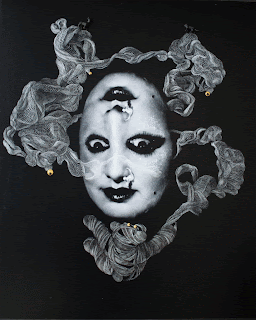In a country like Pakistan where Art, for most people, is still not considered a viable profession, it is no surprise that the importance attached to its study is nonexistent and it is certainly a second-class citizen among other subjects taught in schools and colleges. Although some content named art appears in every class but Art and Art teachers both lie outside the periphery of educational enterprise. A subject without much practical utility, for most, is placed in the service of leisure activities at school that any bored housewife, without relevant qualifications, can potentially teach. What needs to be understood is, how art contributes towards; critical thinking, alternative ways of seeing, multi-cultural and intercultural understandings, free expression, psychological development and divergent pedagogy, avoiding simplistic interpretations (mostly stuff that we speak about in writing only), making it extremely essential for the Art teacher to posses a comprehensive understanding of not just the context of Art but also be well informed about the ‘process’ of constructive communication of knowledge/information.
Beaconhouse National University’s (BNU) School of Visual Arts & Design (SVAD) has taken the initiative to start a Master in Art Education. This MA is the first of its kind in Pakistan, where artists very likely proceed down the road of teaching Art, however education in visual arts is not sufficient qualification for ‘teaching Art’. The program is spread over a period of 3 summers, designed particularly for in-service teachers and practitioners, to pursue this degree without having to leave their respective jobs. This summer was the first summer of the program where some 20 or so art teachers from various parts of the country came together “to examine the variety of environments through which Art forms reach their audience” (borrowed from the description of the program). Most students in the program held BFAs or MAs in visual arts and aimed to acquire a deeper understanding/knowledge of the pedagogical and critical issues, active engagement/interactions, dialogues, reciprocal learning, experimentation, switching the role of a teacher with that of a facilitator/mediator, drawing connections between art and non-art activities and most importantly, asking questions, in theory and practice. Allow me to present to you, their final studio projects that raise some important questions about art, teaching, teaching art, role of art teachers, role of institutions and role of spaces, all very intelligently demonstrated through the public activities designed by the two groups, executed on July 20th, 2011.
Group 1 (Saima haq from Karachi, Asad Hayee, Rohma Khan and Zahra Ali from Lahore) had designed an activity for the Contemporary Painting’s Gallery of the Lahore Museum. Choosing three paintings by Shakir Ali, Gulgee and Sadequain, they had installed a table and a chair against each for placing the puzzles whose pieces when put together recreate the very painting. To my surprise, the otherwise deserted Lahore Museum, was buzzing with eagerness and purposefulness on that day. Dressed in white, the four of them were well aware of their role as facilitators and were great with inviting, helping/assisting everyone to understand and achieve their goals. The simple act of looking at the painting and trying to assemble the puzzle, very intelligently, touches upon a number of significant issues, such as, looking, seeing, observing, analyzing, doing, knowing, remembering, imitating, playing, teaching, making, naming, dialoguing, e.t.c and raises important concerns about making museums (especially the Lahore Museum) educational, inviting and fun, also it is highly effective in fostering active engagement with arts that could potentially stimulate a desire to investigate further.
Where as, the three ladies in the other group (Nazia Anwar from Karachi, Ayesha Attiya and Zoona Kundi from Lahore) bravely hit the streets on this very hot July afternoon. They would start making drawings on the walkways of the central horseshoe in liberty market, which was an excellent venue to explore/question/critique/make use/explore the potential of a public space for a few hours of communal free expression. As the people would start to gather around them, only then they would offer colored chalks, providing the children, men and women (who, one would hardly expect to participate) a chance to participate. And so the crowd grew bigger and bigger and bigger. Time/development of time (spent, invested, required for the drawing to disappear eventually) and its transitory nature was certainly the important factor here. This ‘encounter’, with Art (medium and activity) and people, brings to my mind Bourriaud’s theory of ‘Relational Aesthetics’ that seeks to offer a criteria to analyse encounters with contemporary society and contemporary art, while investigating the public and the private. Art, spaces, geographies, human activity are hence, all relational, having bonding, sociability, dialogue and self expression at its foundation. Despite the heat, their investment, eagerness and the display of tremendous energy and enthusiasm was extraordinary. Articulating the tensions between art and society, such ‘Situations’, while favoring dialogue over monologue insist upon use rather than contemplation, creating conditions of exchange.






